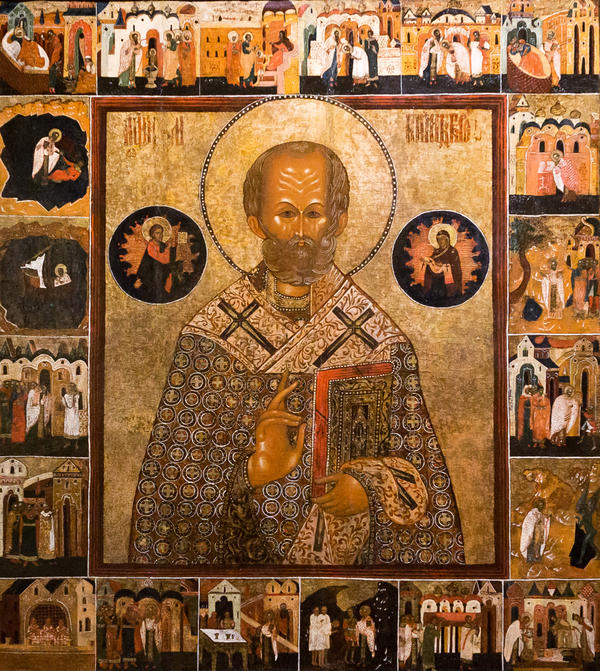Saint Nicholas the Wonderworker
Creation period
middle of the 17th century
Dimensions
121,5x104,5 cm
121.5х104 cm
121.5х104 cm
Technique
Levkas (gesso), tempera on wood
Collection
4
Open in app#1
Unknown artist
Saint Nicholas the Wonderworker
#3
#2
Nicholas the Wonderworker was born in Patara, a provincial town in Lycia in the south-west of Asia Minor. In early 4th century Nicholas was ordained a bishop of Myra in Lycia. According to another version, due to a divine vision, he was ordained Archbishop despite the fact that he was a layman.
#4
The iconography of Nicholas the Wonderworker was affected by what happened at the First Council of Nicaea. In 325, Emperor Constantine the Great summoned Christian Church representatives to the Council to stop the conflict between the followers of Saint Alexander of Alexandria’s teaching and Arius, and to revise and adopt the unified creed. Although Nicholas of Myra in Lycia is not mentioned among the holy fathers of the Council of Nicaea, some sources claim that he attended it and indirectly revealed to the world one of his first miracles.
During the argument with Arius, Nicholas defending the concept that the Father and the Son are of the same essence (consubstantiality) lost his temper and slapped Arius in the face. He was punished by being denied the right to wear an omophor - a special sign of archbishopric in the form of a long broad shoulder ribbon with pictures of crosses on it - and was arrested. During that night the bishops who attended the Council had a vision of Virgin Mary and Jesus Christ holding a Gospel and an omophor indicating that their decision was unjust. The next day Nicholas was released and his rank was restored to him.
#6
The exhibited icon of Saint Nicholas the Wonderworker belongs to hagiographic images. Following the established tradition, the master presented the saint and scenes from his life around him. The border scenes are painted as independent rectangular compositions.
#7
The centre of the icon is occupied by the saint’s bust-length figure. On either side of the nimbus, in round medallions, the master depicted the Saviour and the Mother of God giving Nicholas the signs of archbishopric – a Gospel and an omophor. This obligatory part of the St. Nicholas iconography is dedicated to the miracle of Nicaea. The centrepiece is surrounded with 20 episodes from St. Nicholas’s — his birth, baptism, ordainment as deacon and bishop, and the miracles that happened thanks to prayers to the saint.
The master made the icon in the middle of the 17th century following the traditions of old Russia icon painting. The image of the saint is done in the reddish-brown colour with a touch of yellowish ochre. The master richly decorated the archbishop’s stole with an ornament and the Gospel edge with pearls. Despite the church size of the icon, the face of the saint in the centrepiece is painted in very fine detail.
#8
New Jerusalem Museum
read morehide
00:00
00:00
1x
Saint Nicholas the Wonderworker
Creation period
middle of the 17th century
Dimensions
121,5x104,5 cm
121.5х104 cm
121.5х104 cm
Technique
Levkas (gesso), tempera on wood
Collection
4
Open in app
Share



